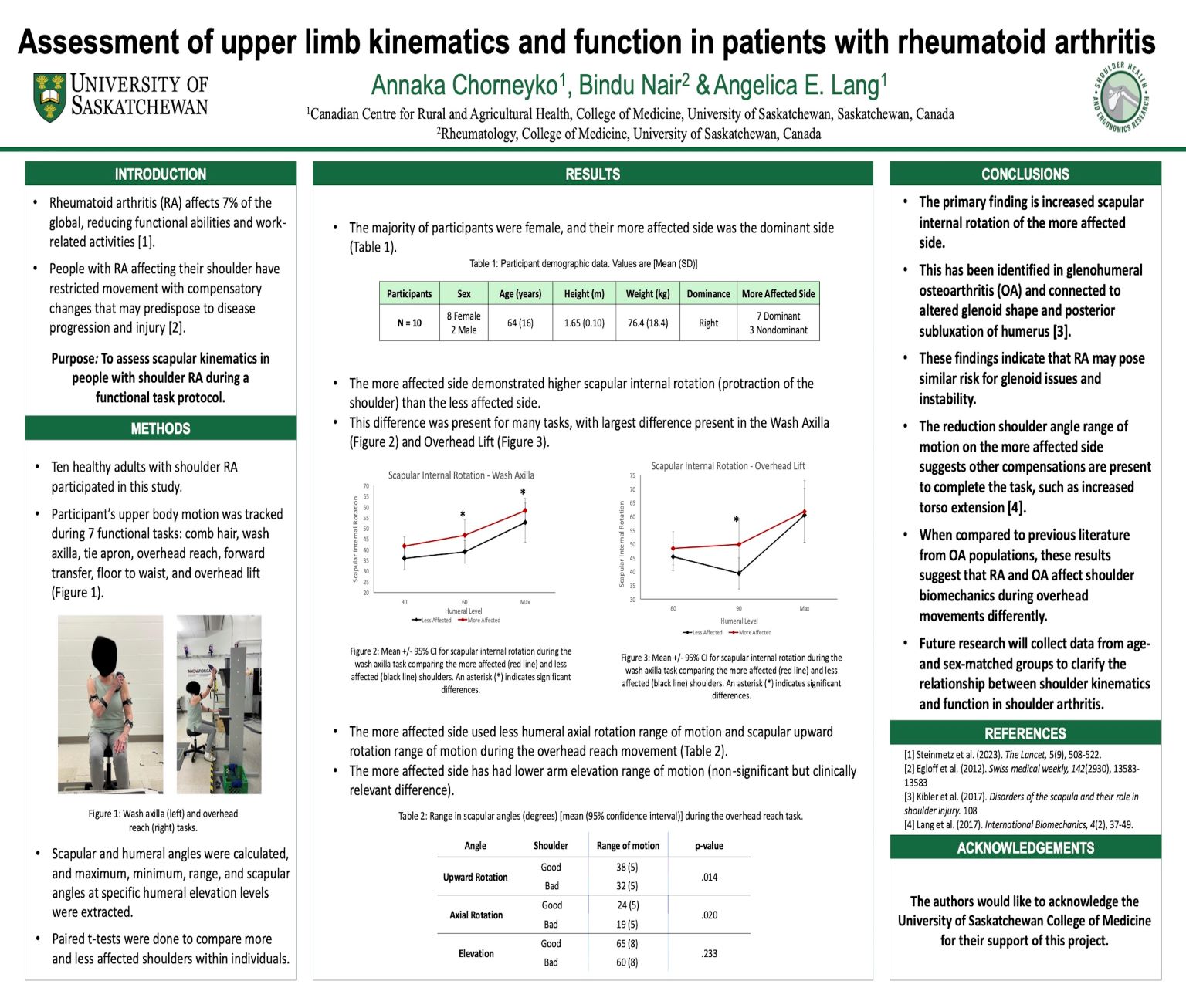
Assessment of upper limb kinematics and function in patients with rheumatoid arthritis
Annaka Chorneyko
Rheumatoid arthritis (RA) is an inflammatory joint disorder that causes pain and disability. The shoulder joint in particular is important for the maintenance of functional abilities, including work-related function. Biomechanics, or movement, of the shoulder joint are an important consideration for function. Compensatory movement patterns may lead to disease progression and increased disability. The objective of this study was to assess shoulder biomechanics in people with RA during a functional task protocol. Upper limb motion was tracked using optical motion capture during simulated activities of daily living. Paired t-tests were used to compare more affected and less affected shoulders. The primary finding was higher scapular internal rotation in the more affected limb in several tasks, which has also previously been connected to shoulder instability and negatively altered glenoid shape in osteoarthritic shoulders. In addition, the more affected limb demonstrated less upward rotation, less humeral elevation, and less humeral axial rotation during an overhead reaching task, suggesting that other movement compensations are occurring on the affected side that could have implications for overall abilities. Given the preliminary nature of this work, future research will deepen our understanding of the connection between RA and shoulder function.
